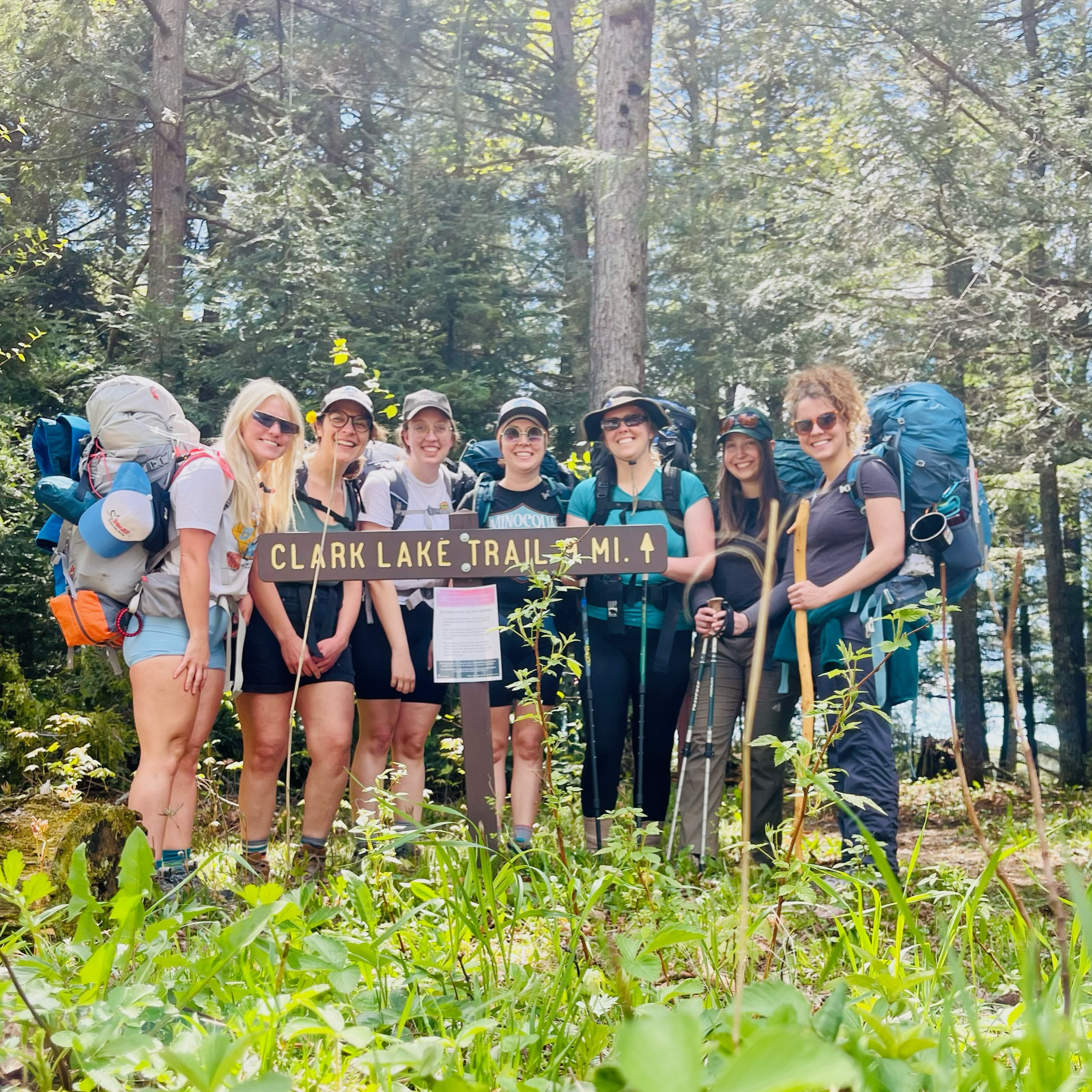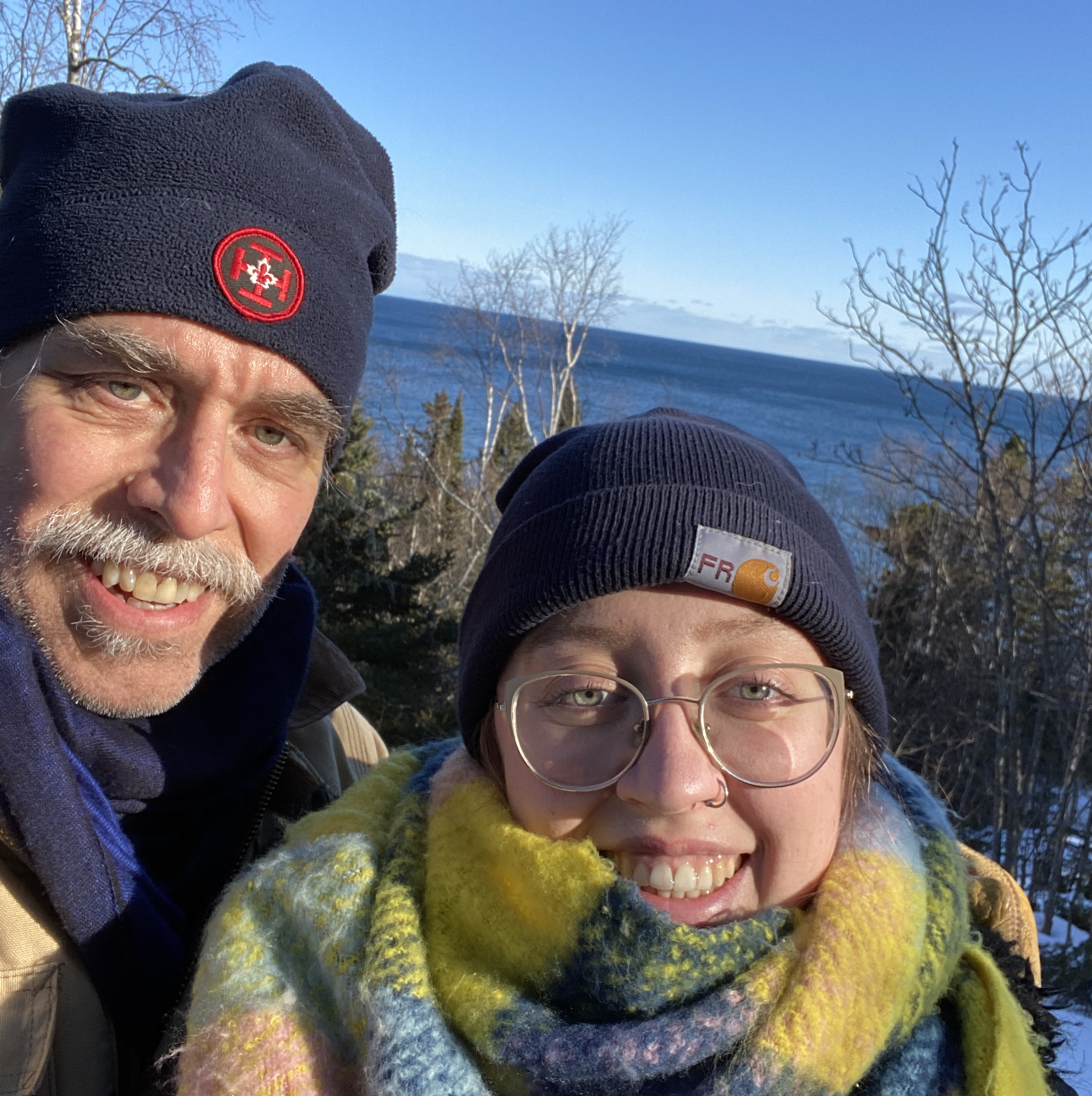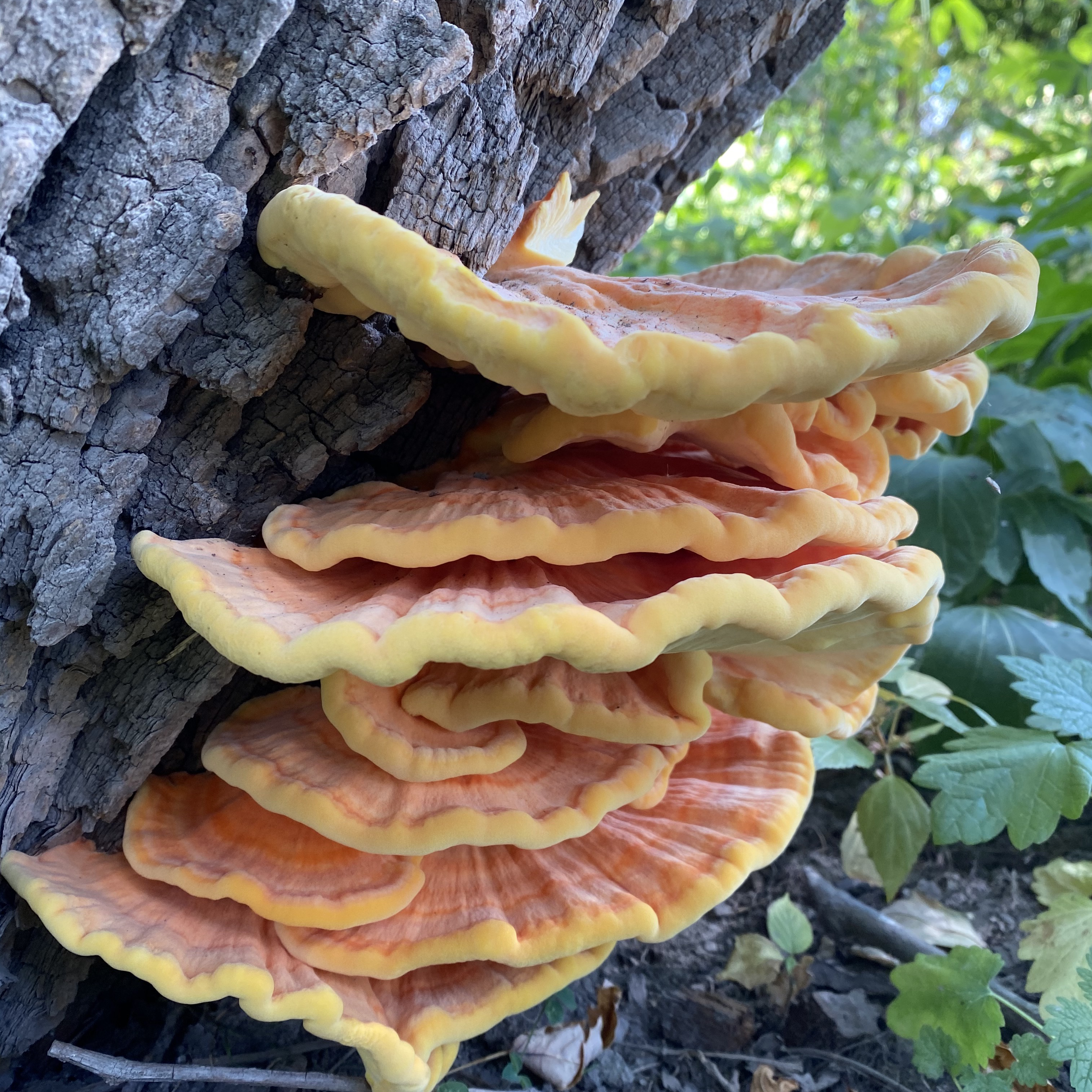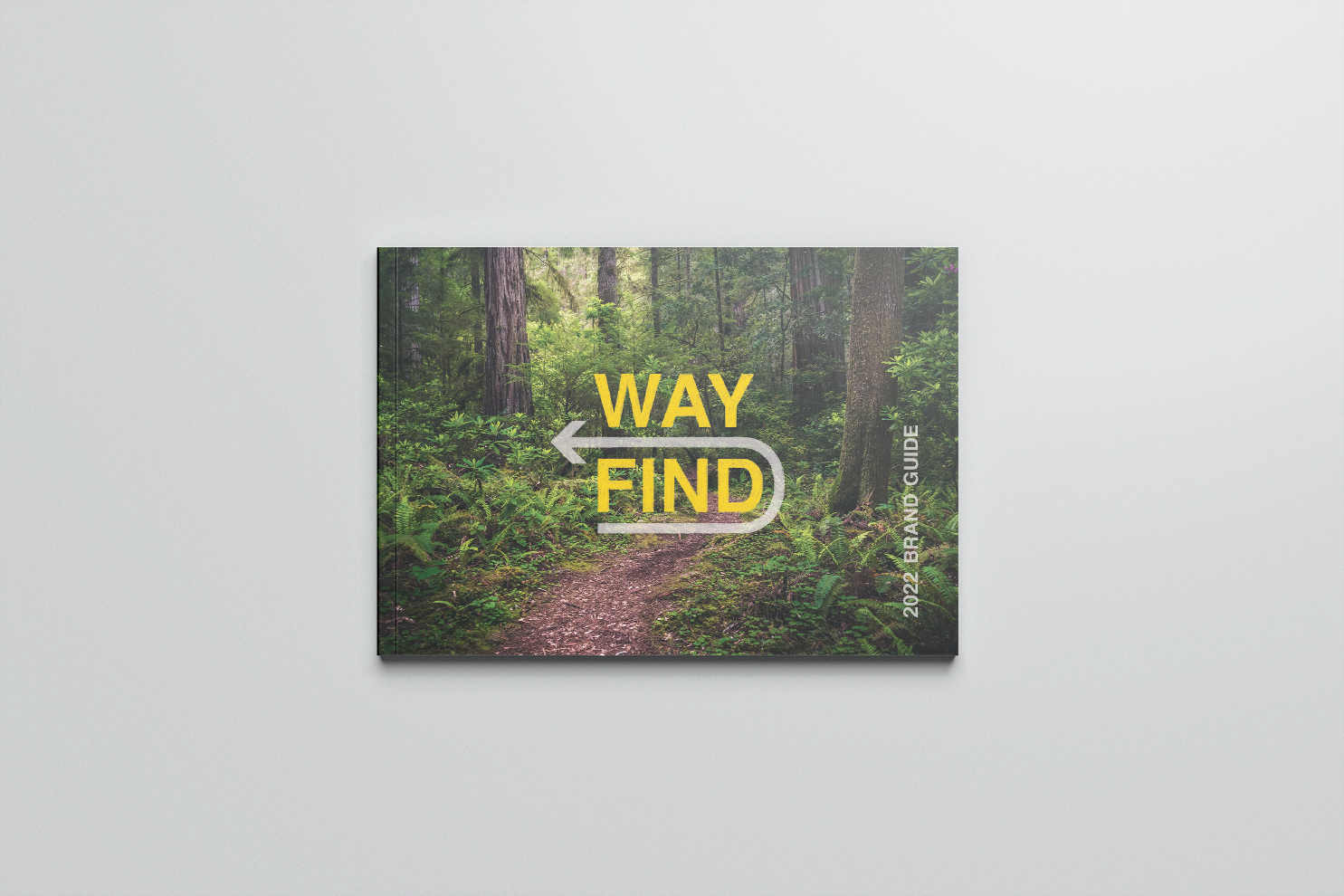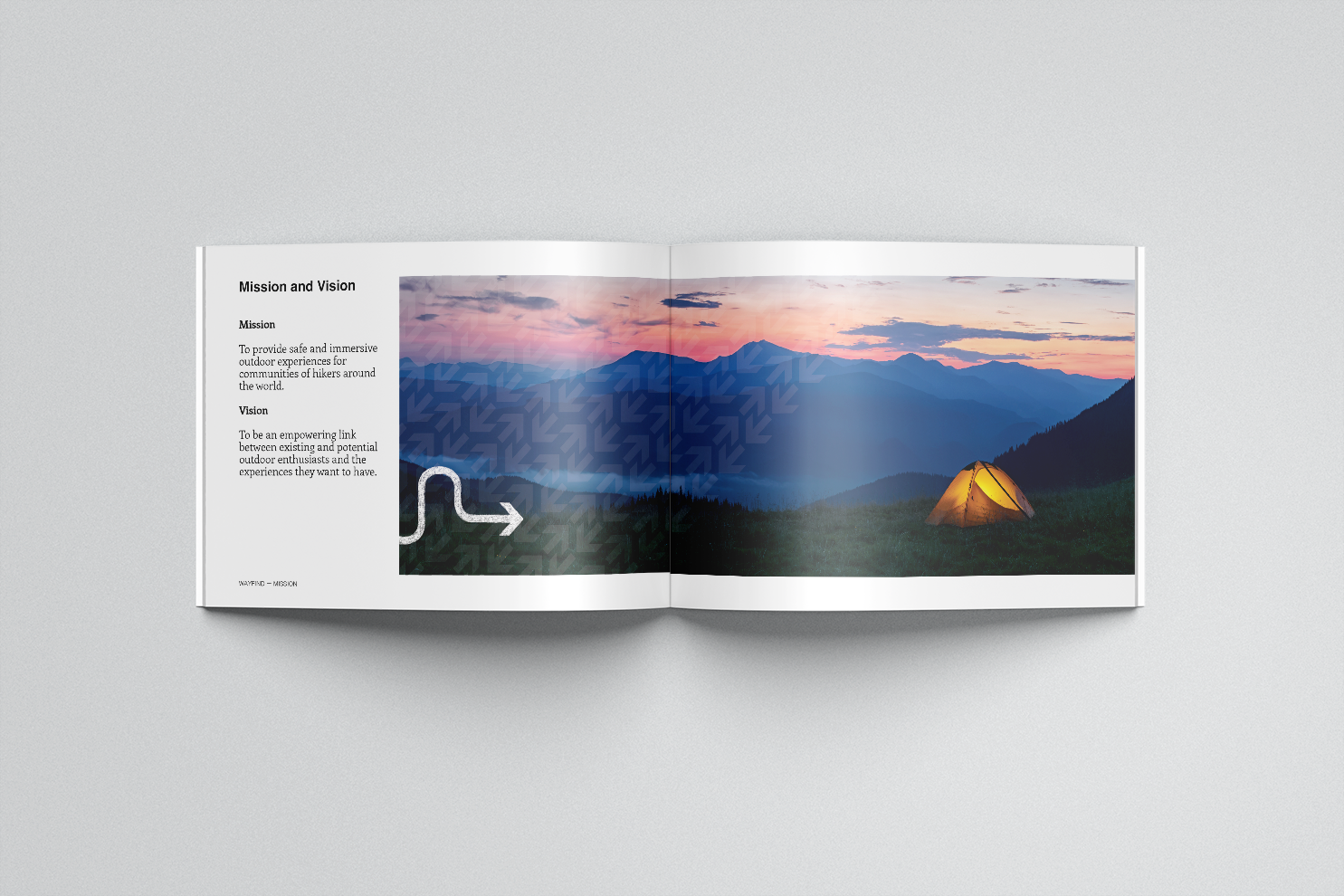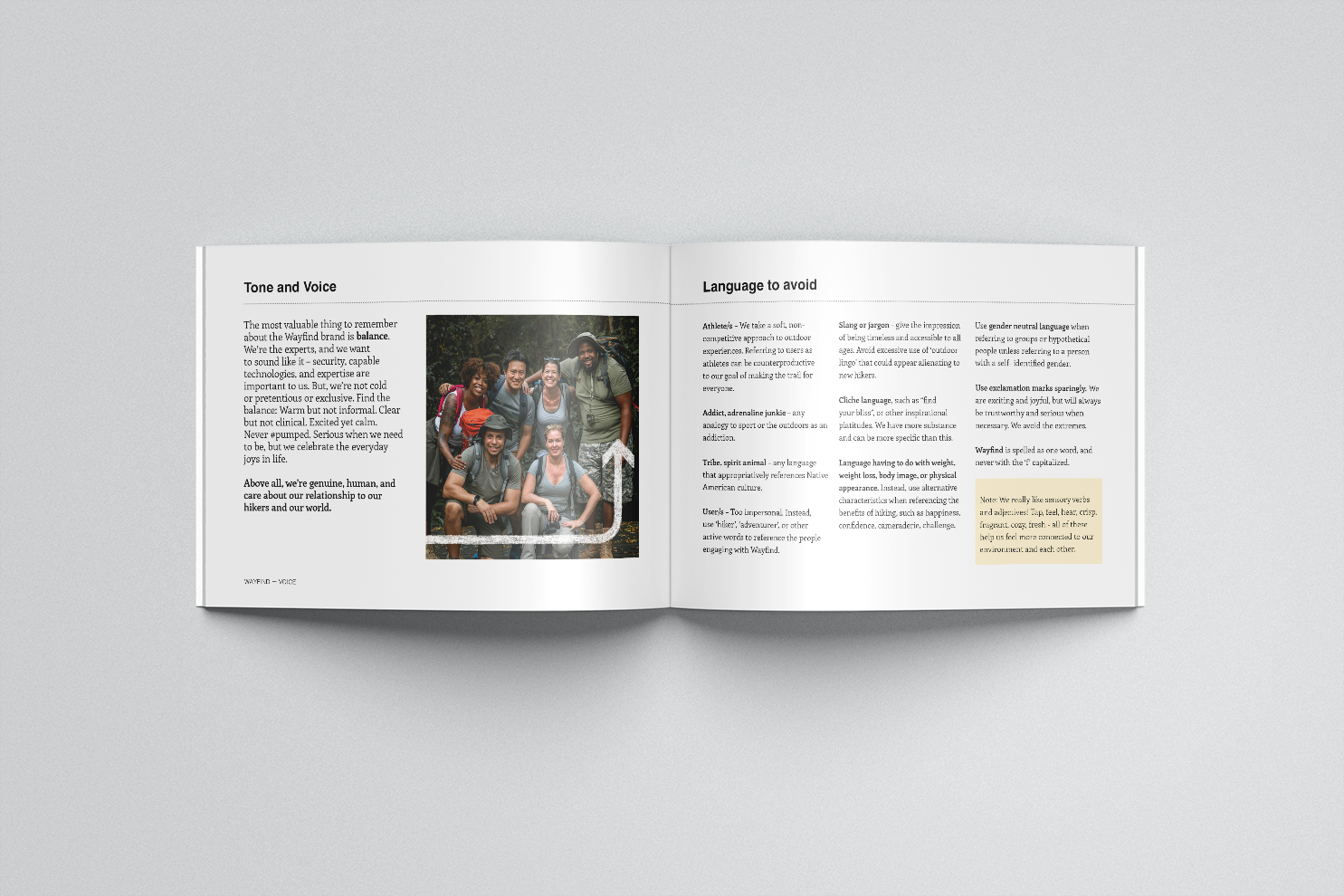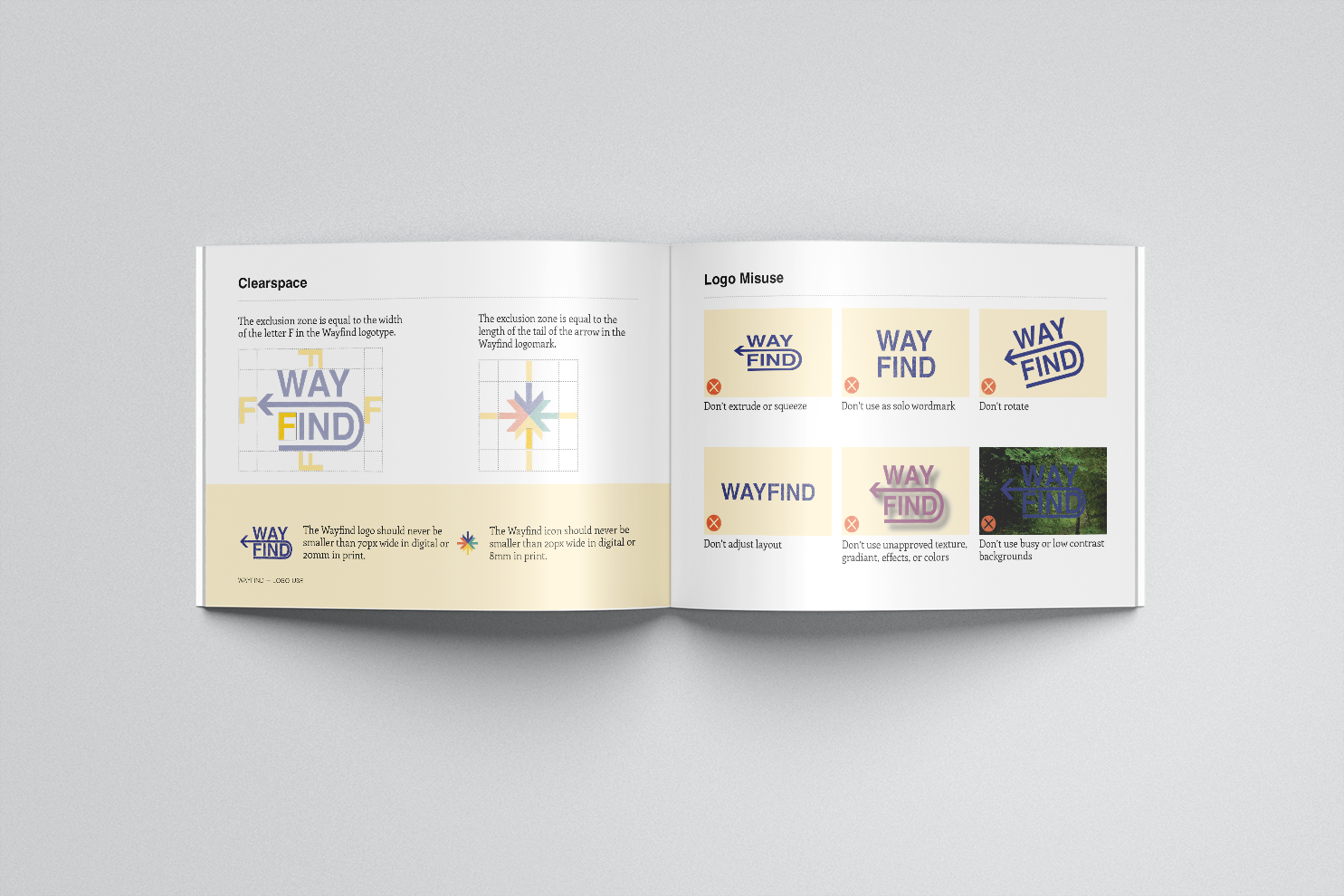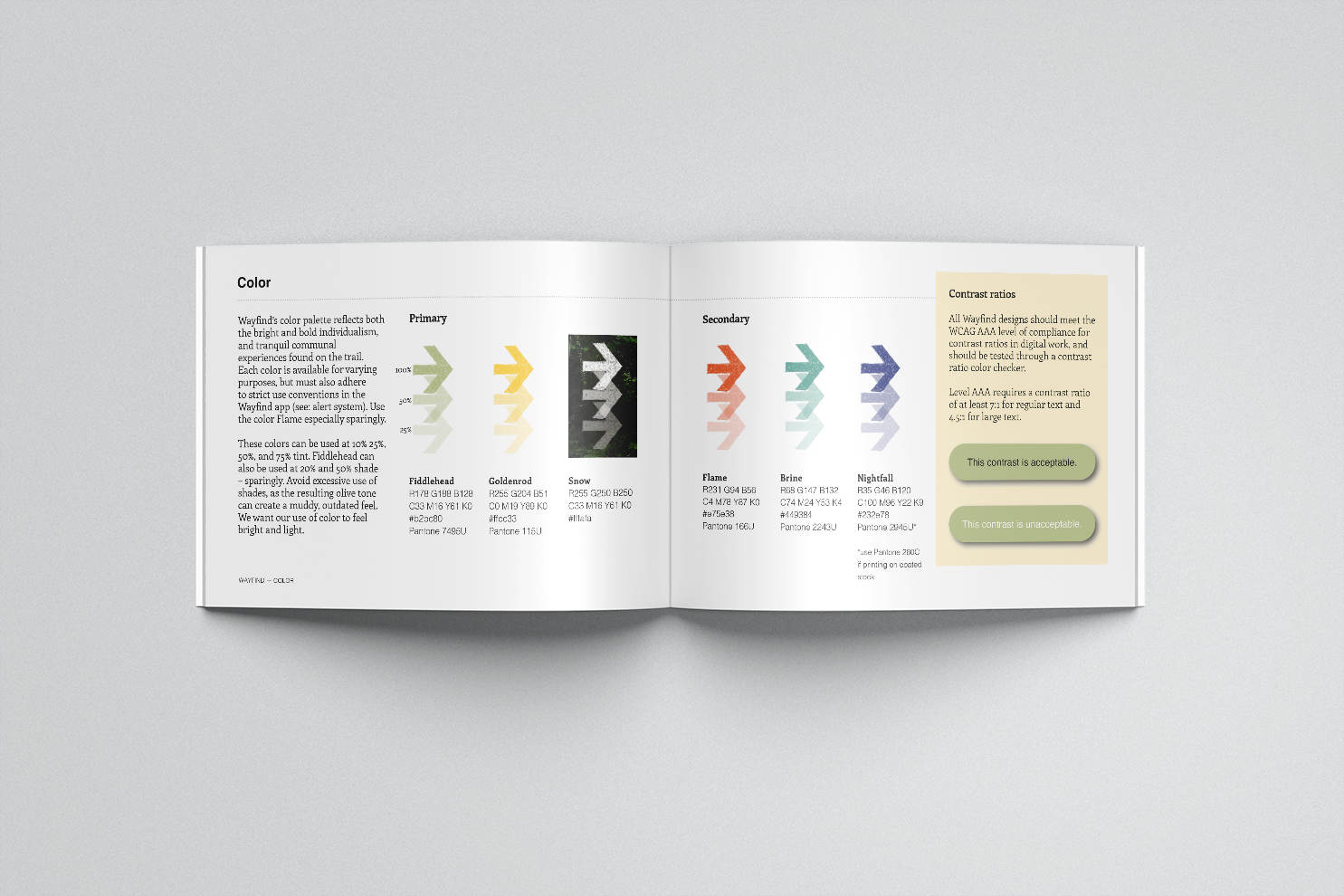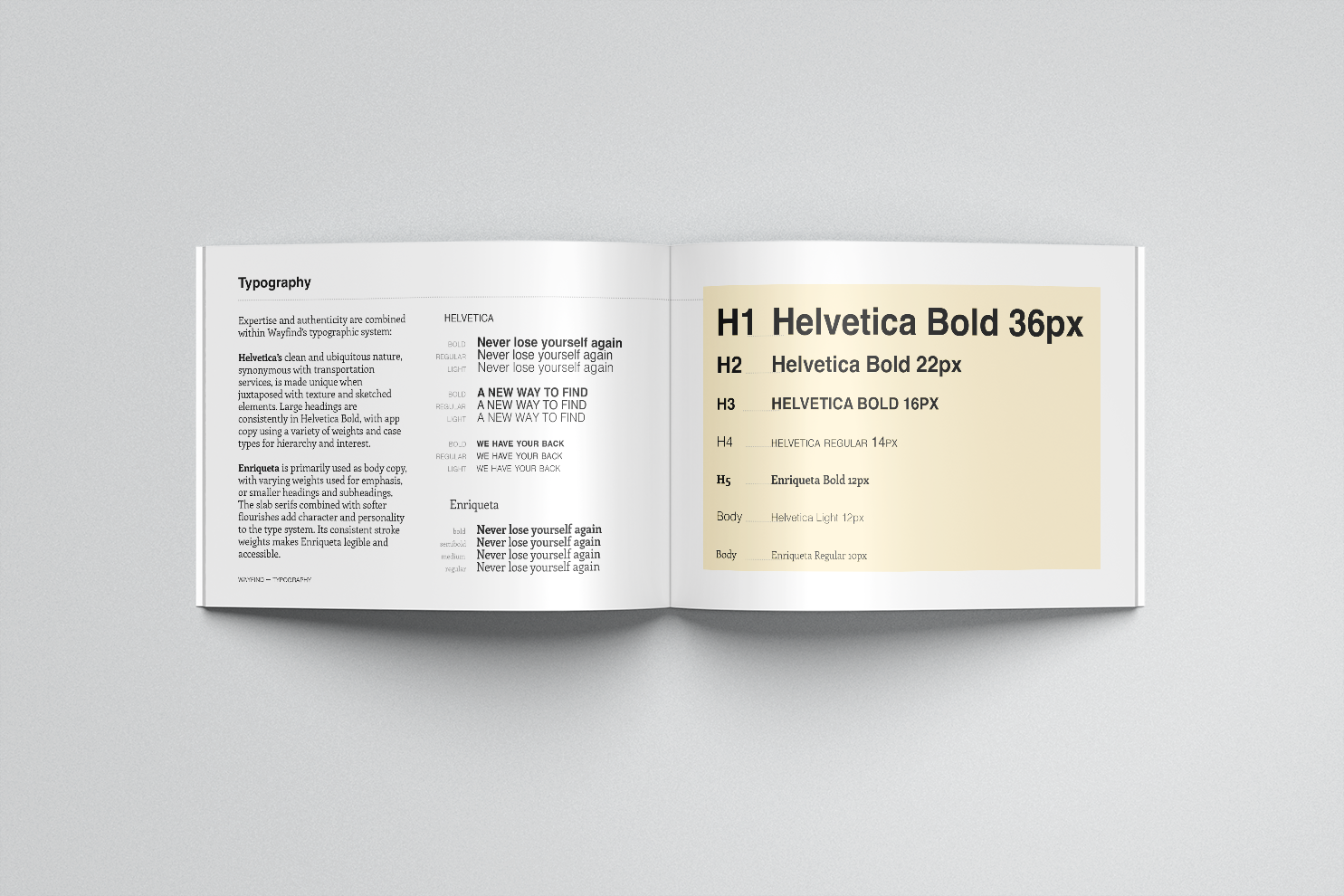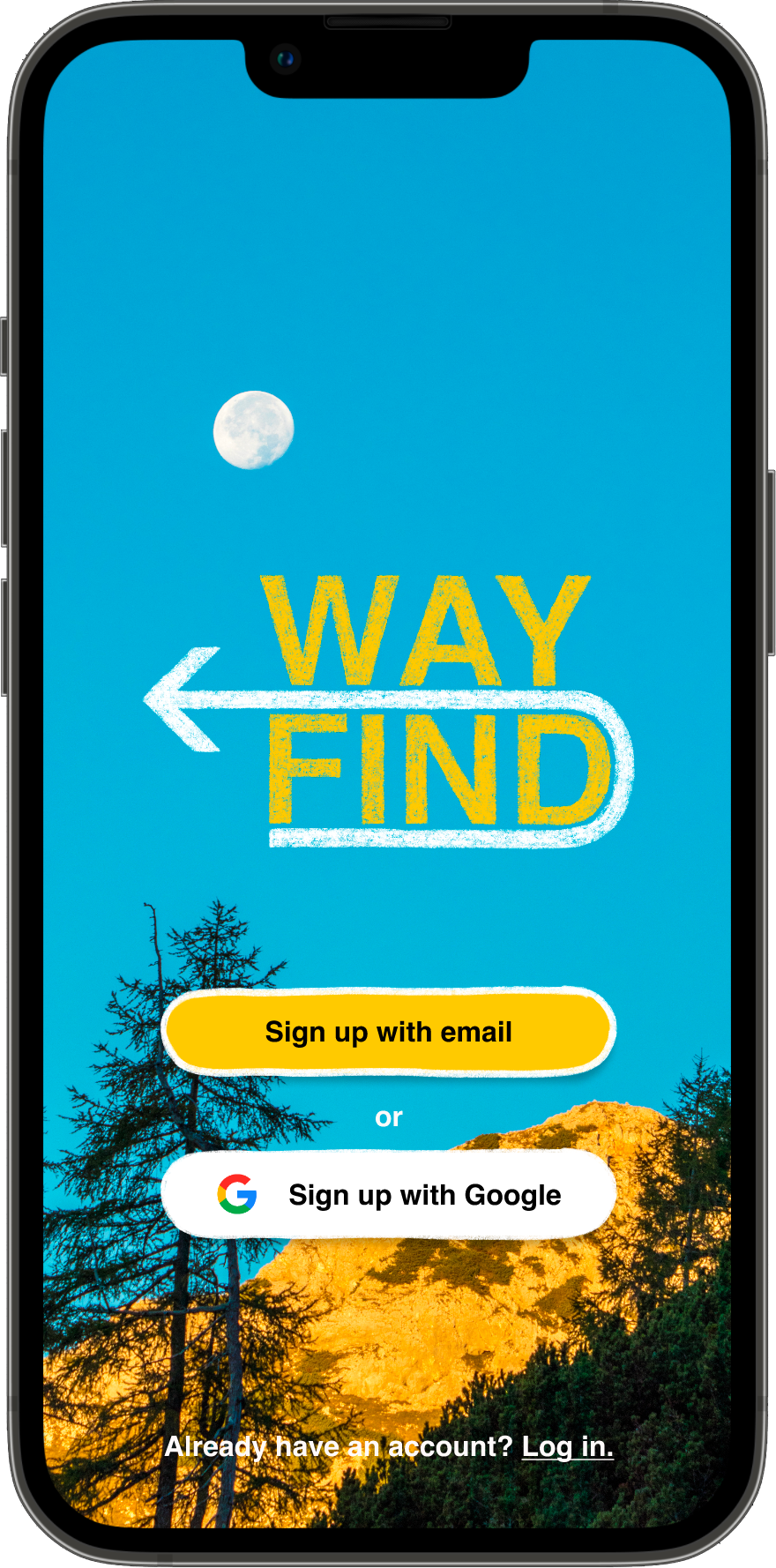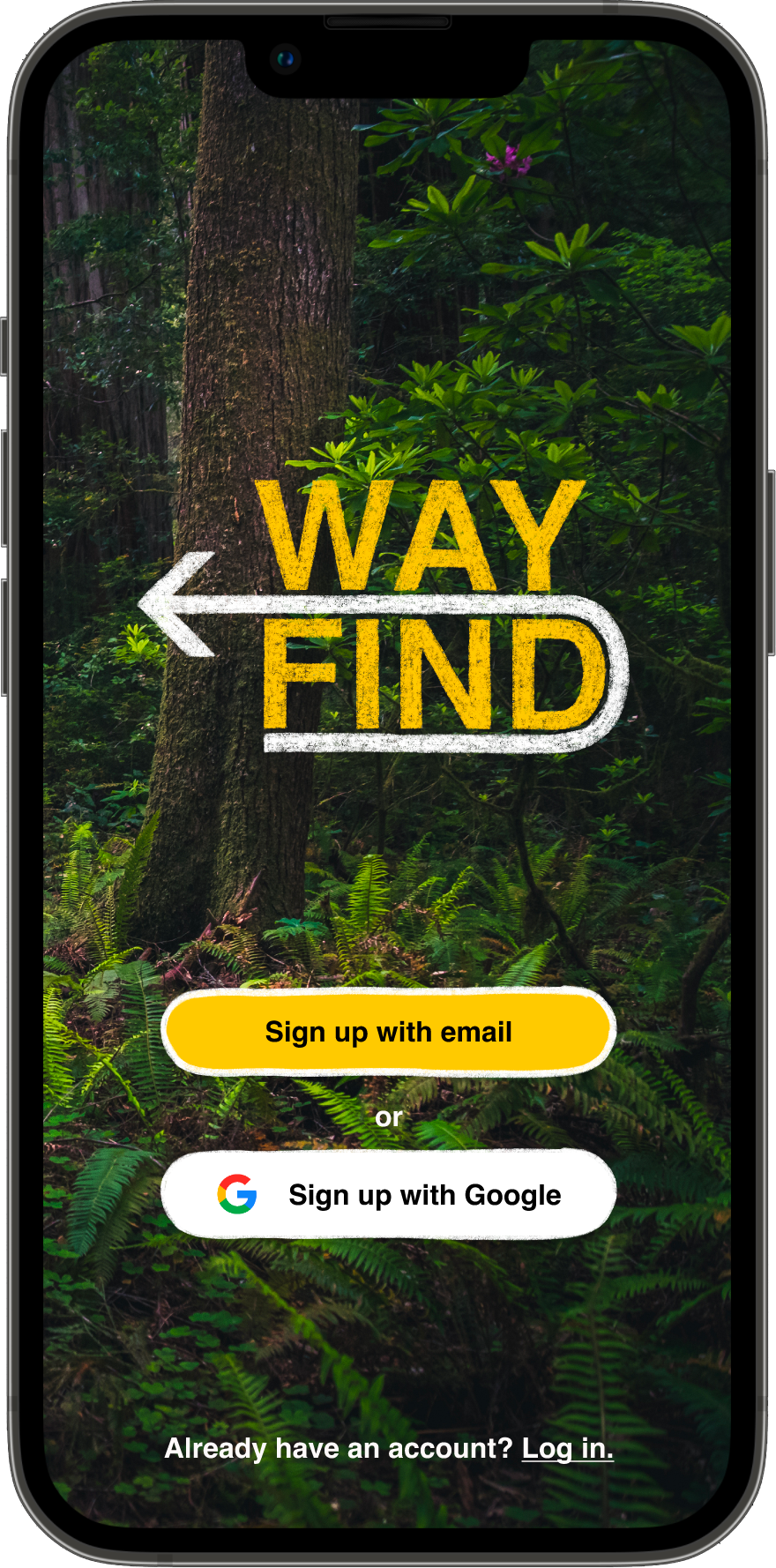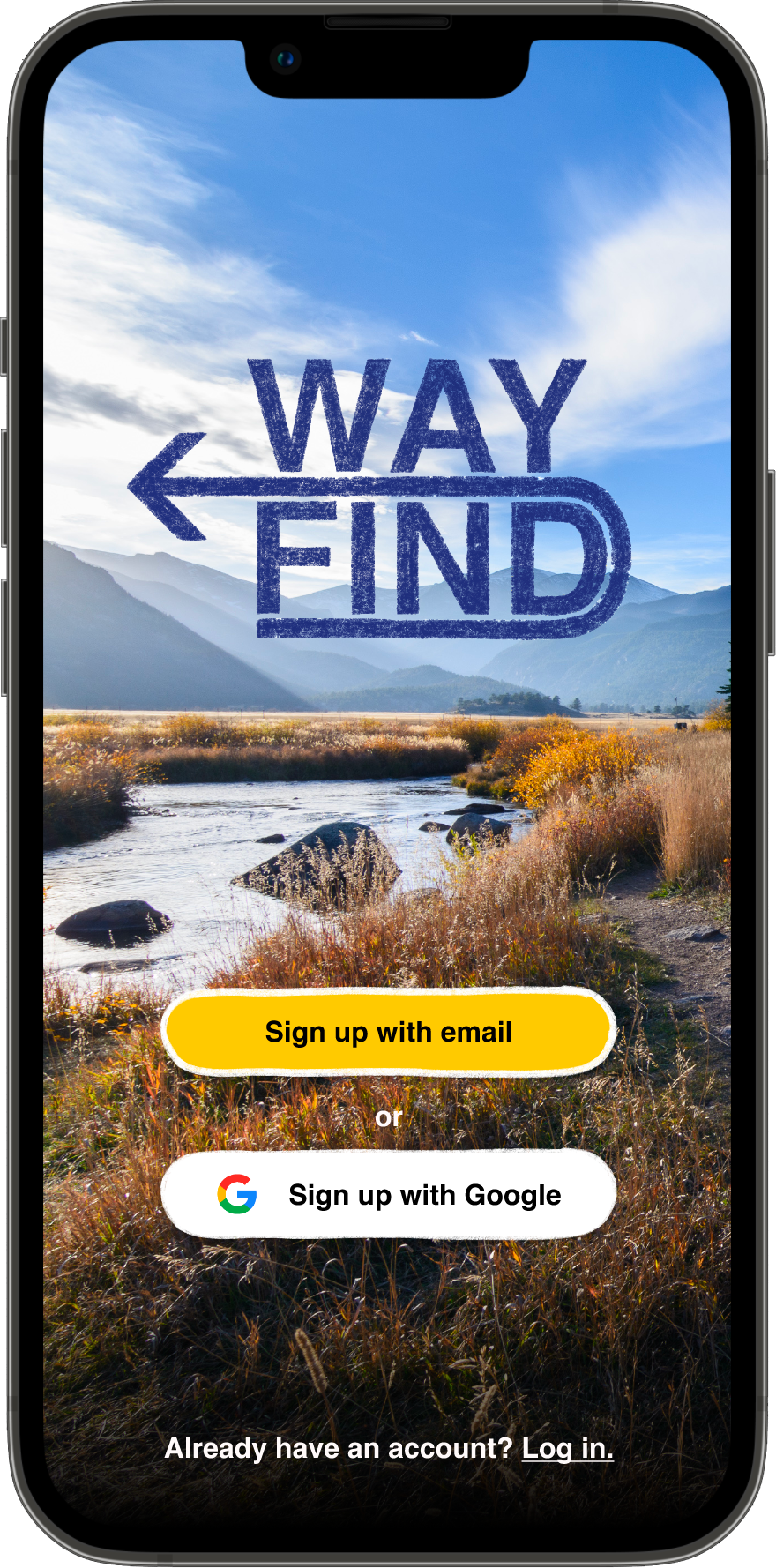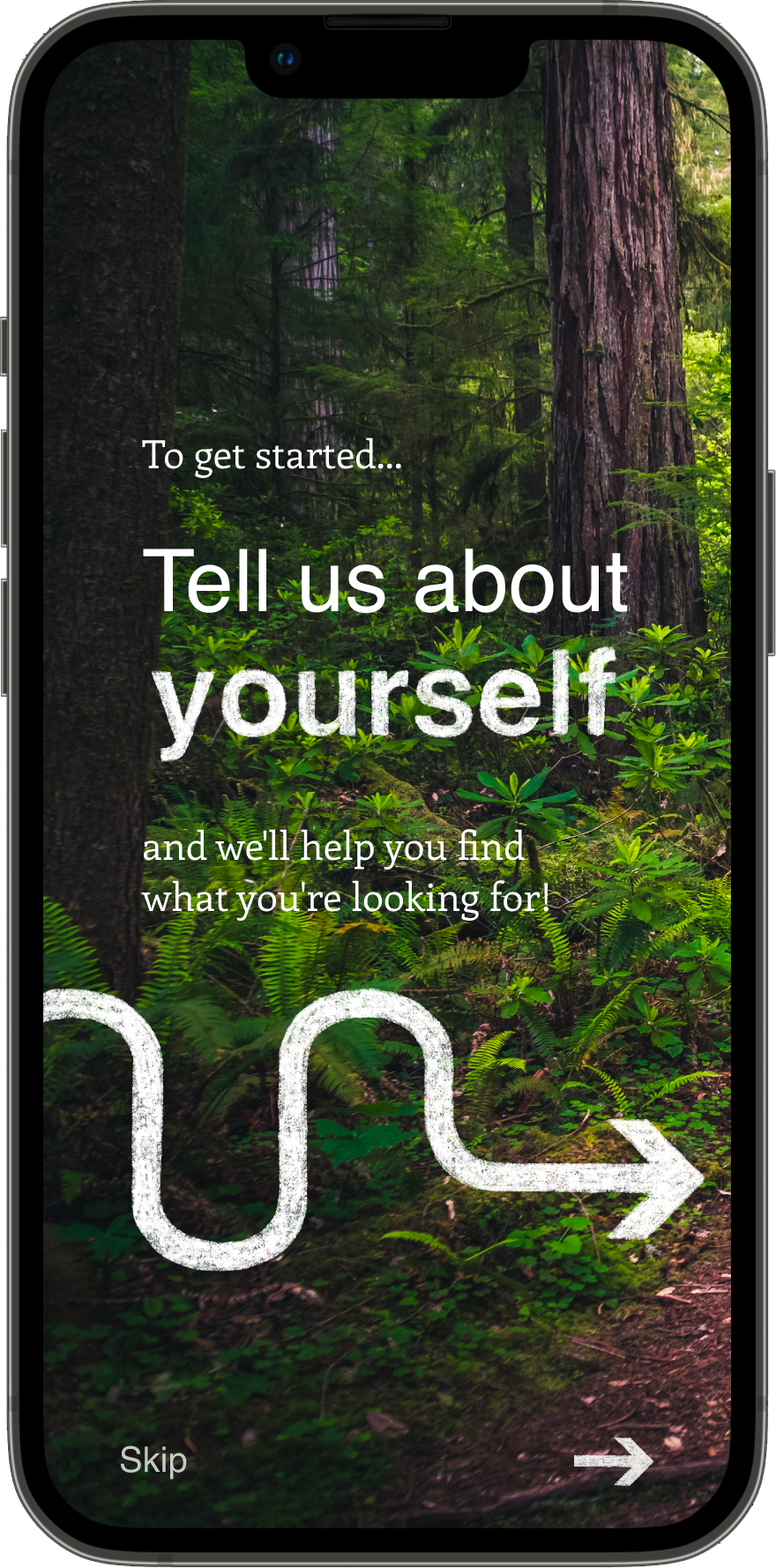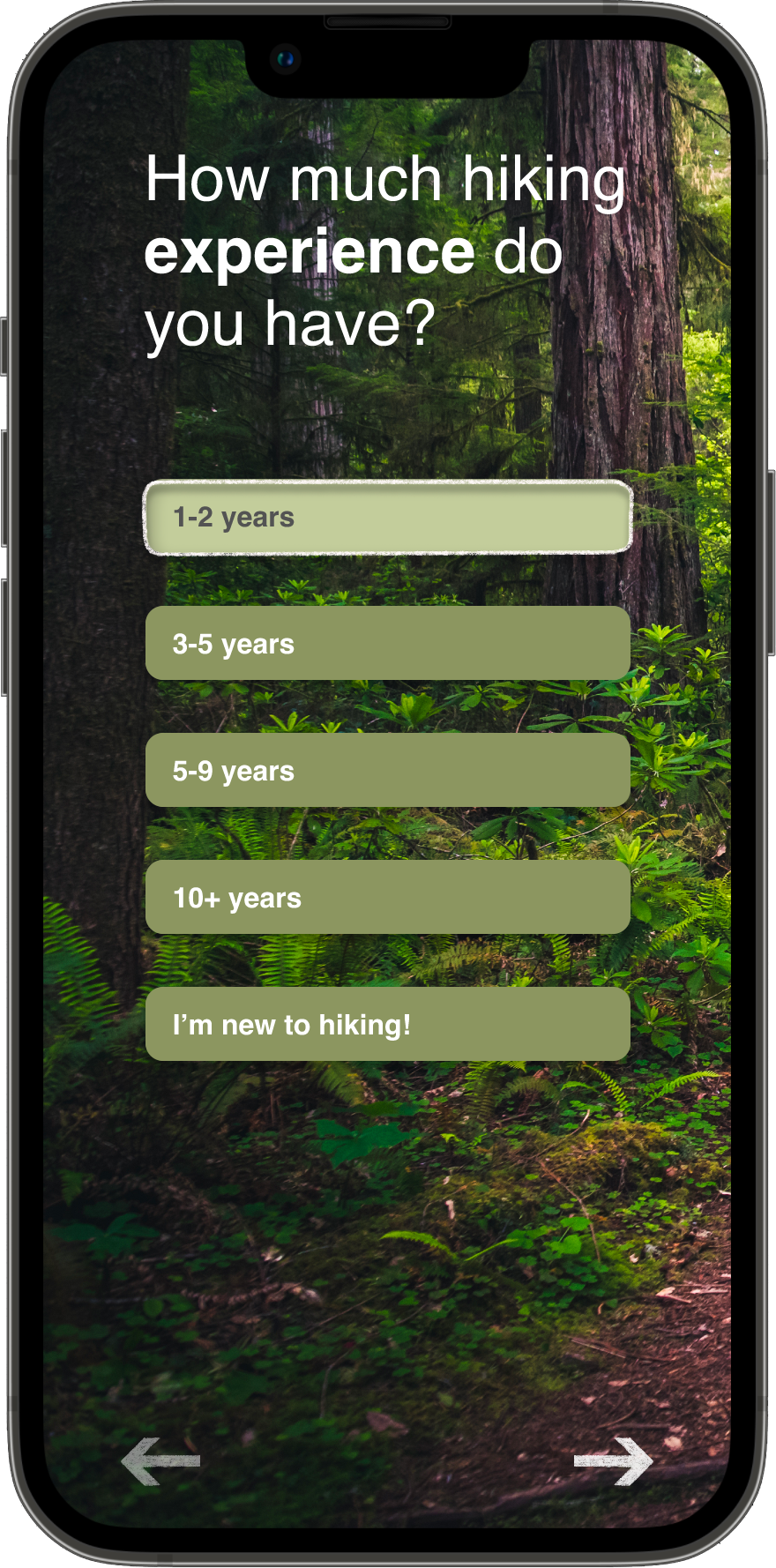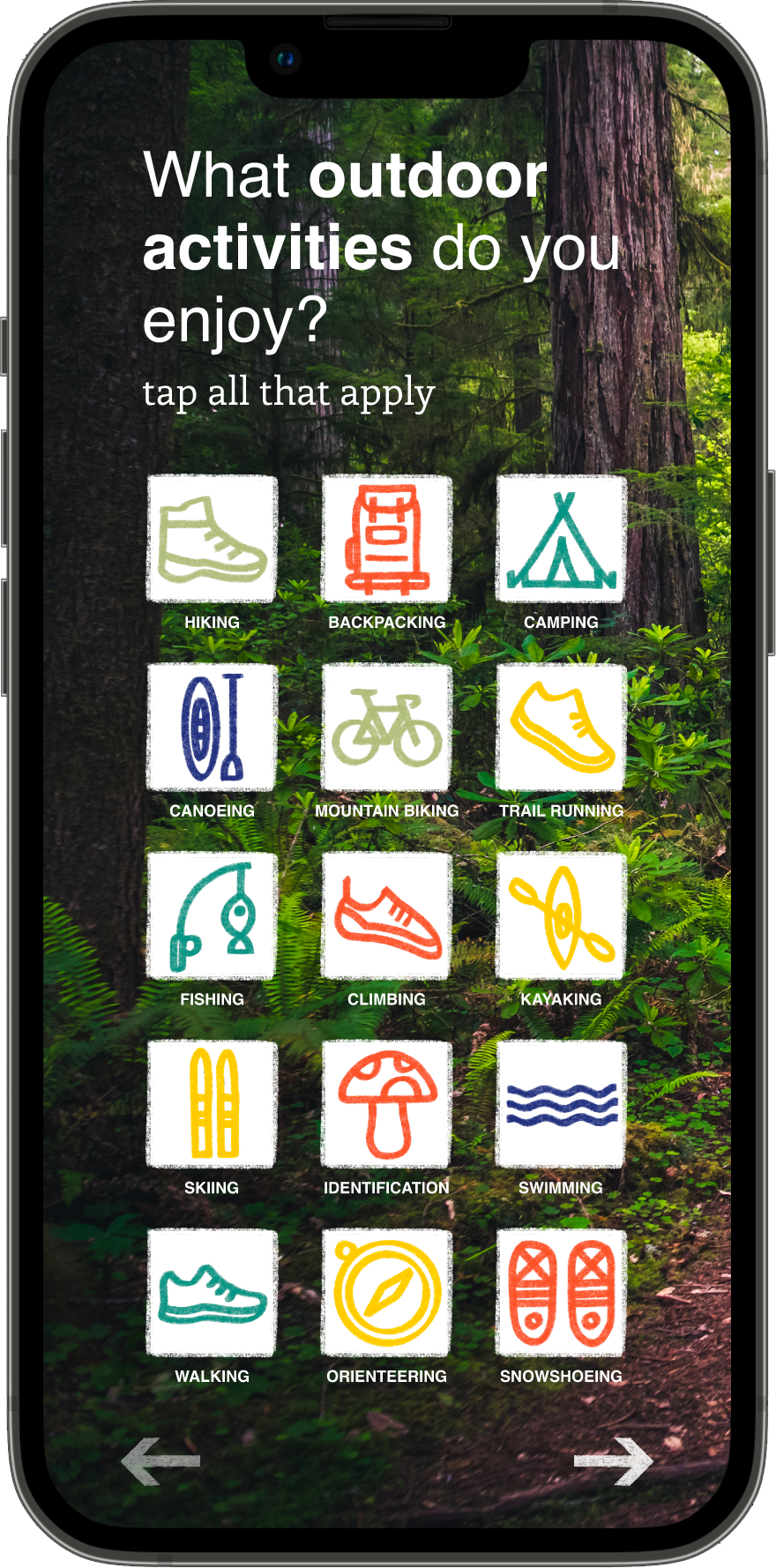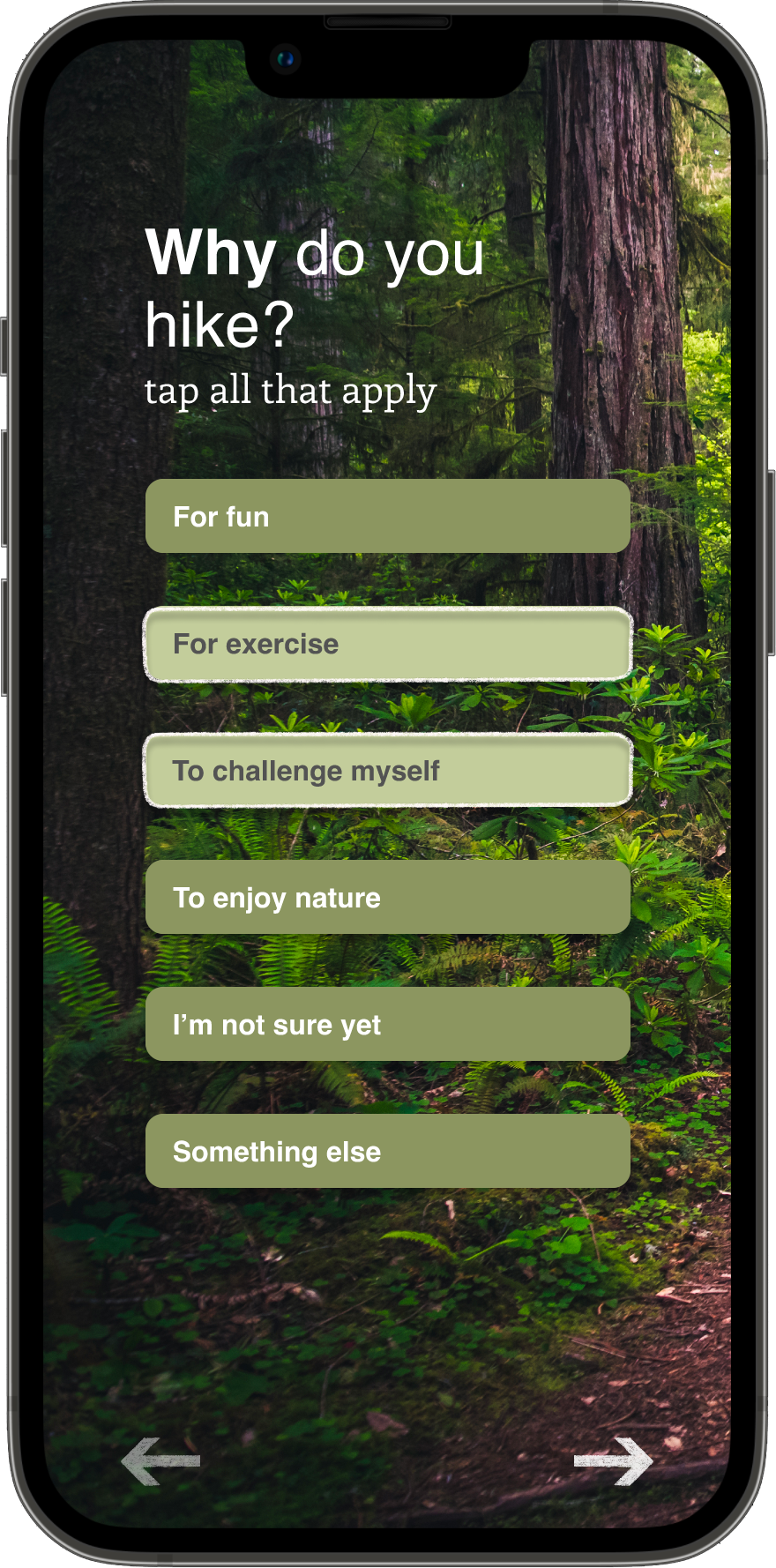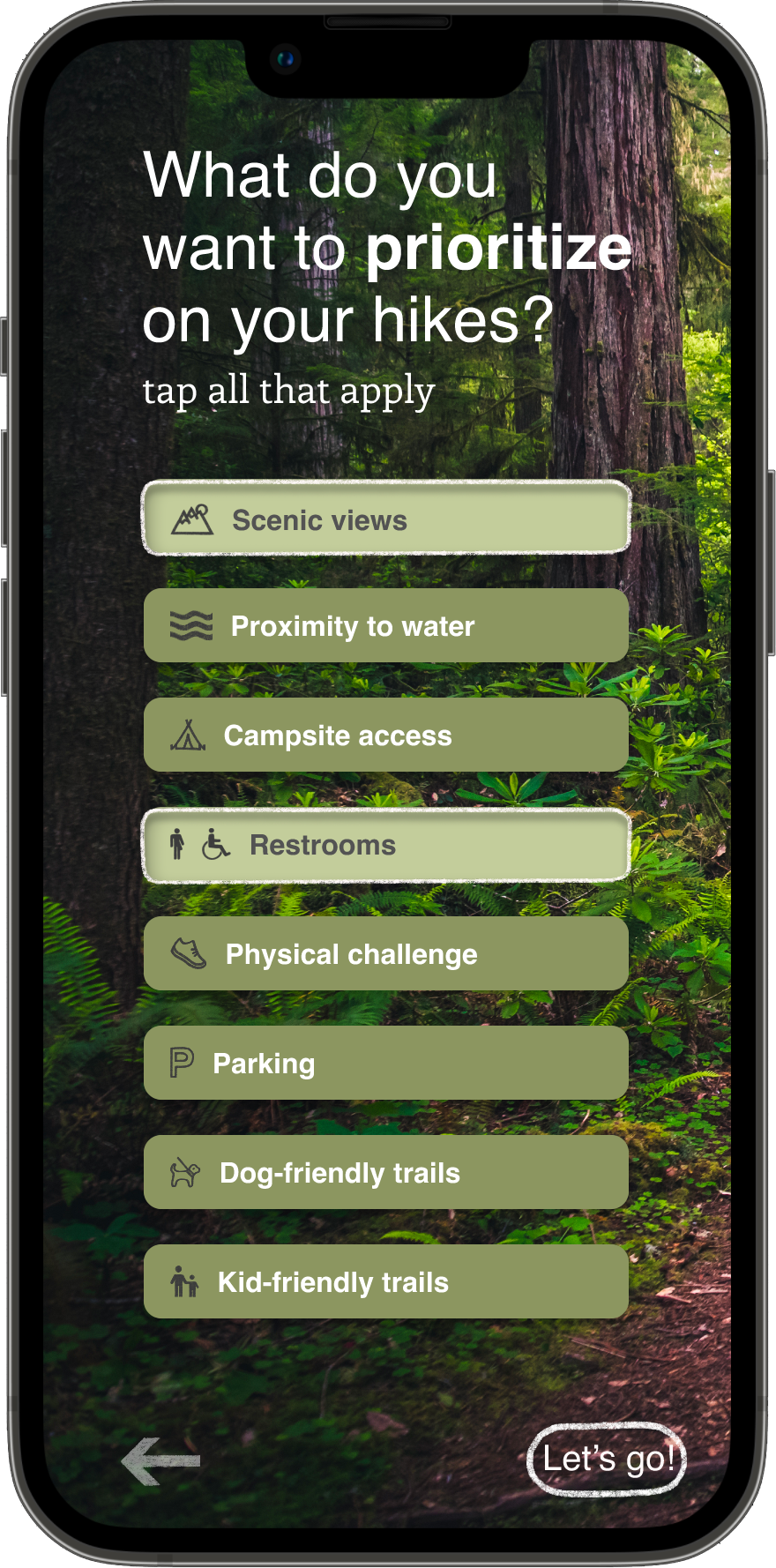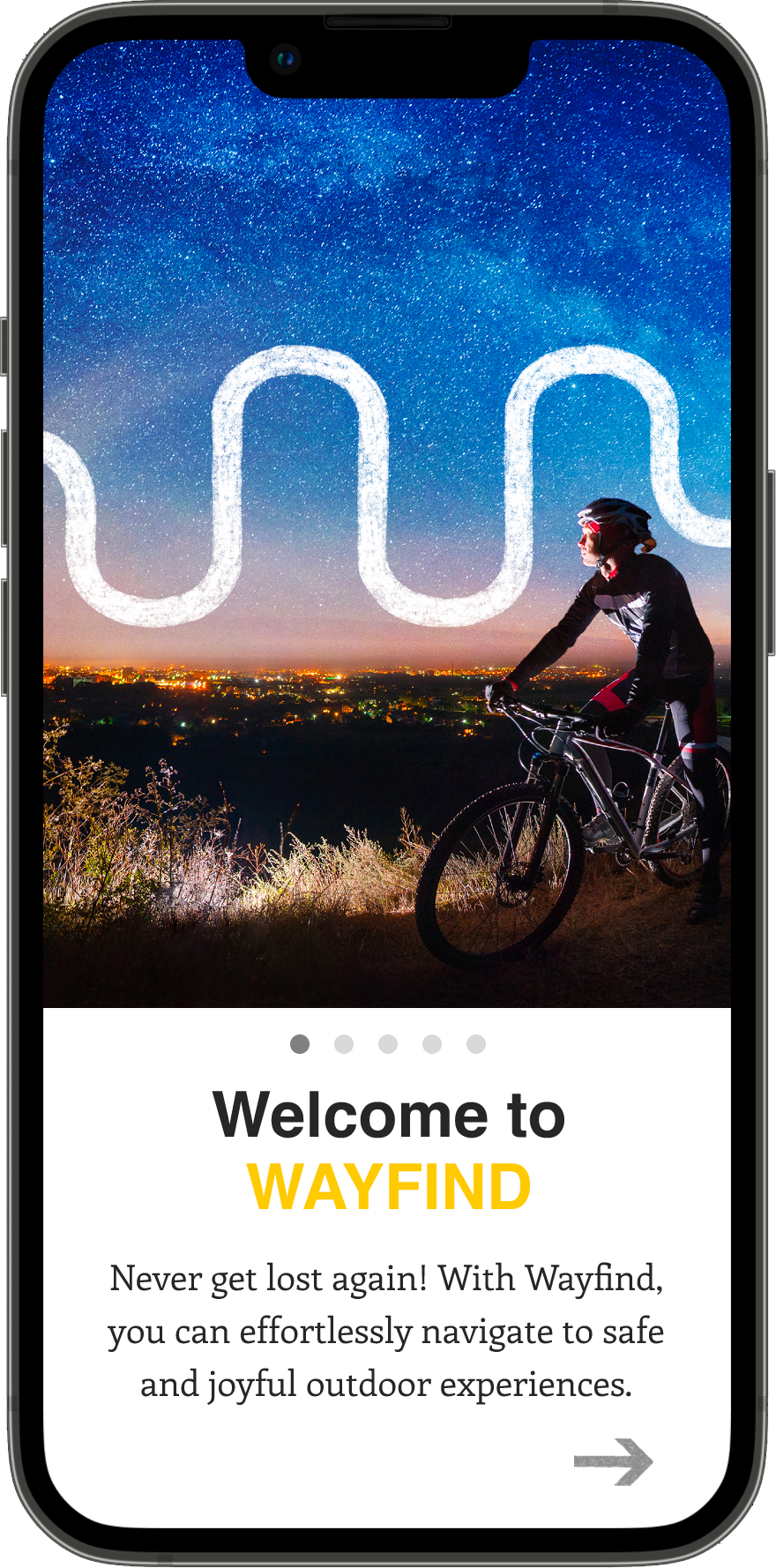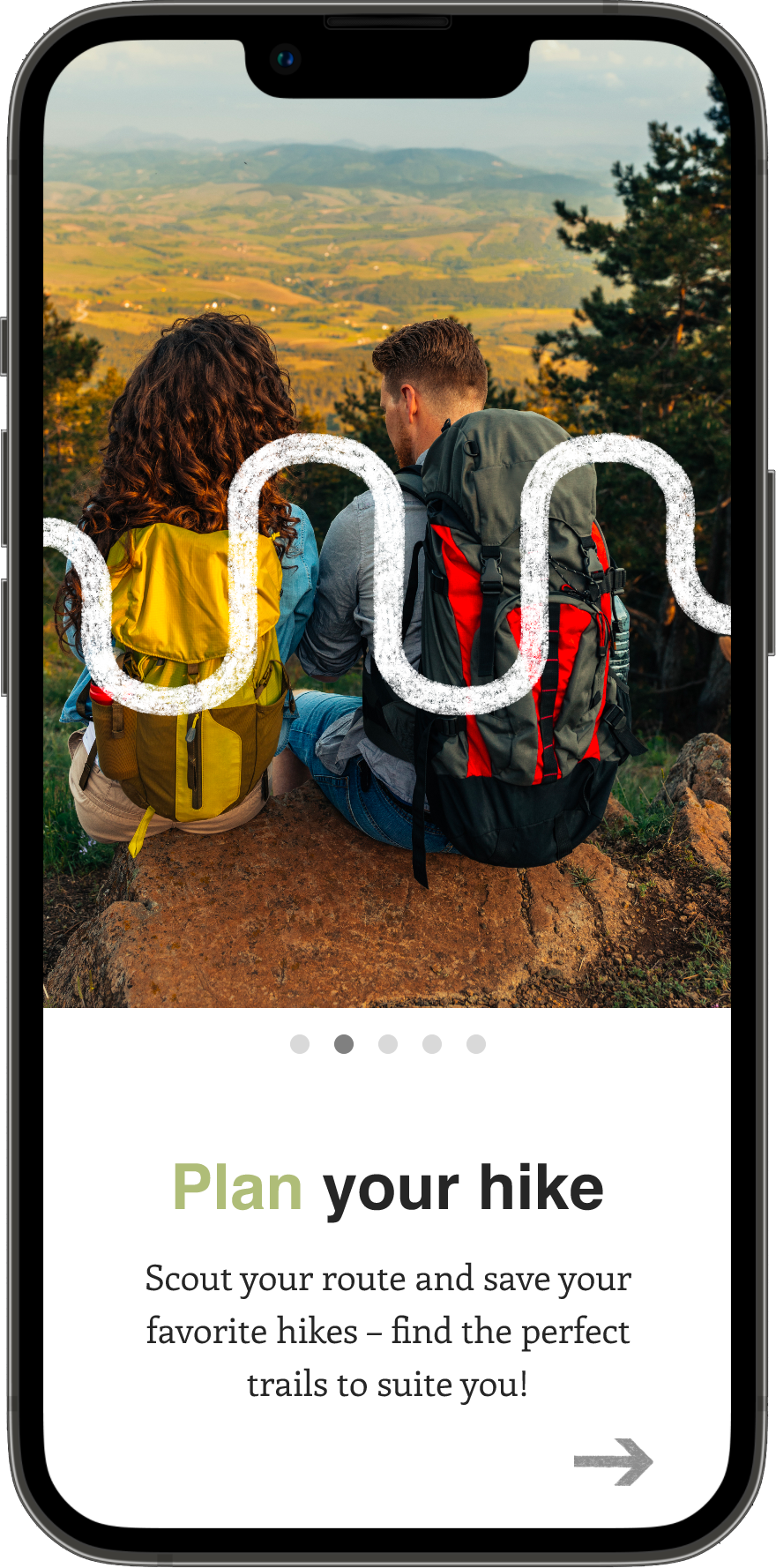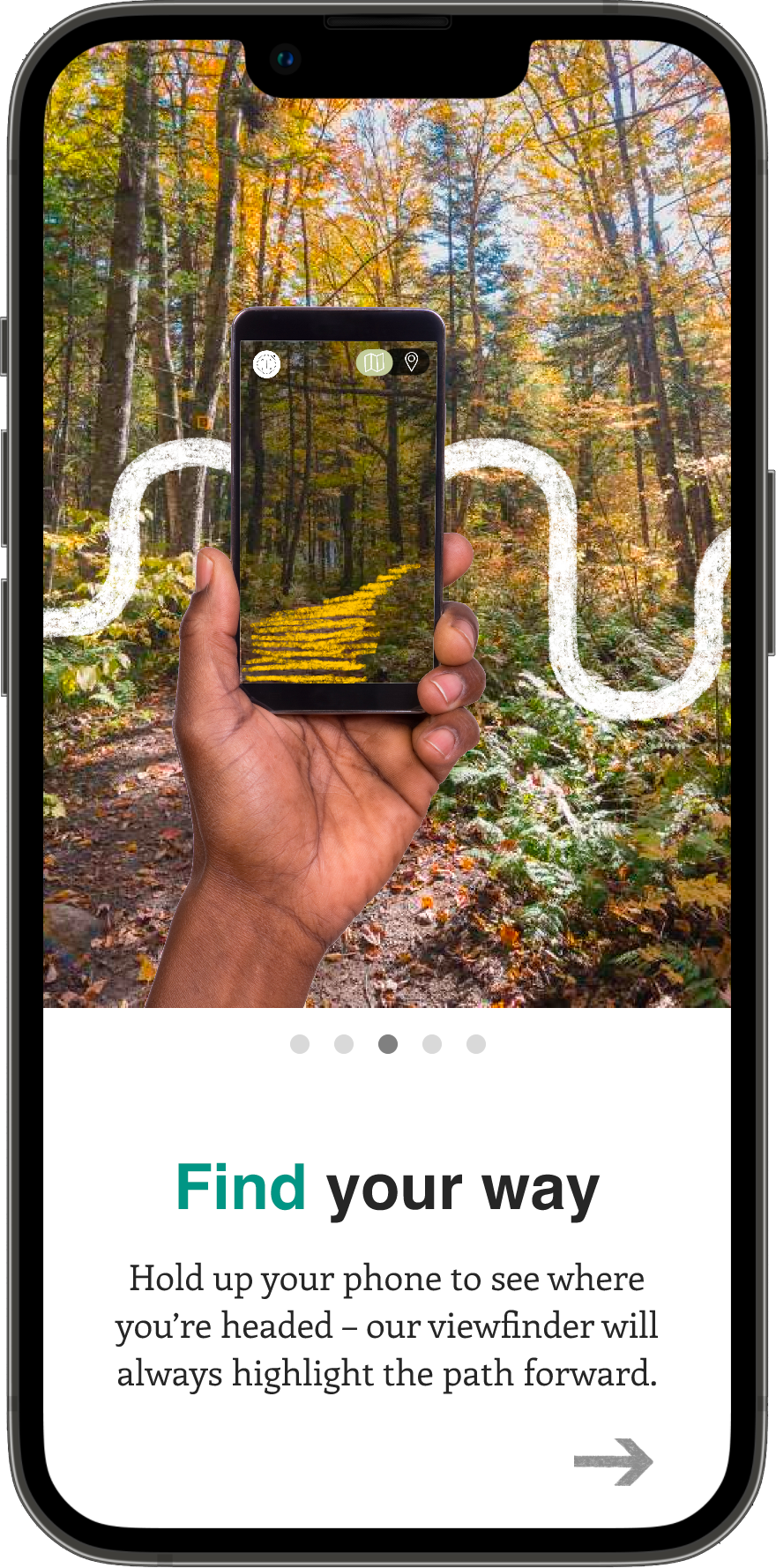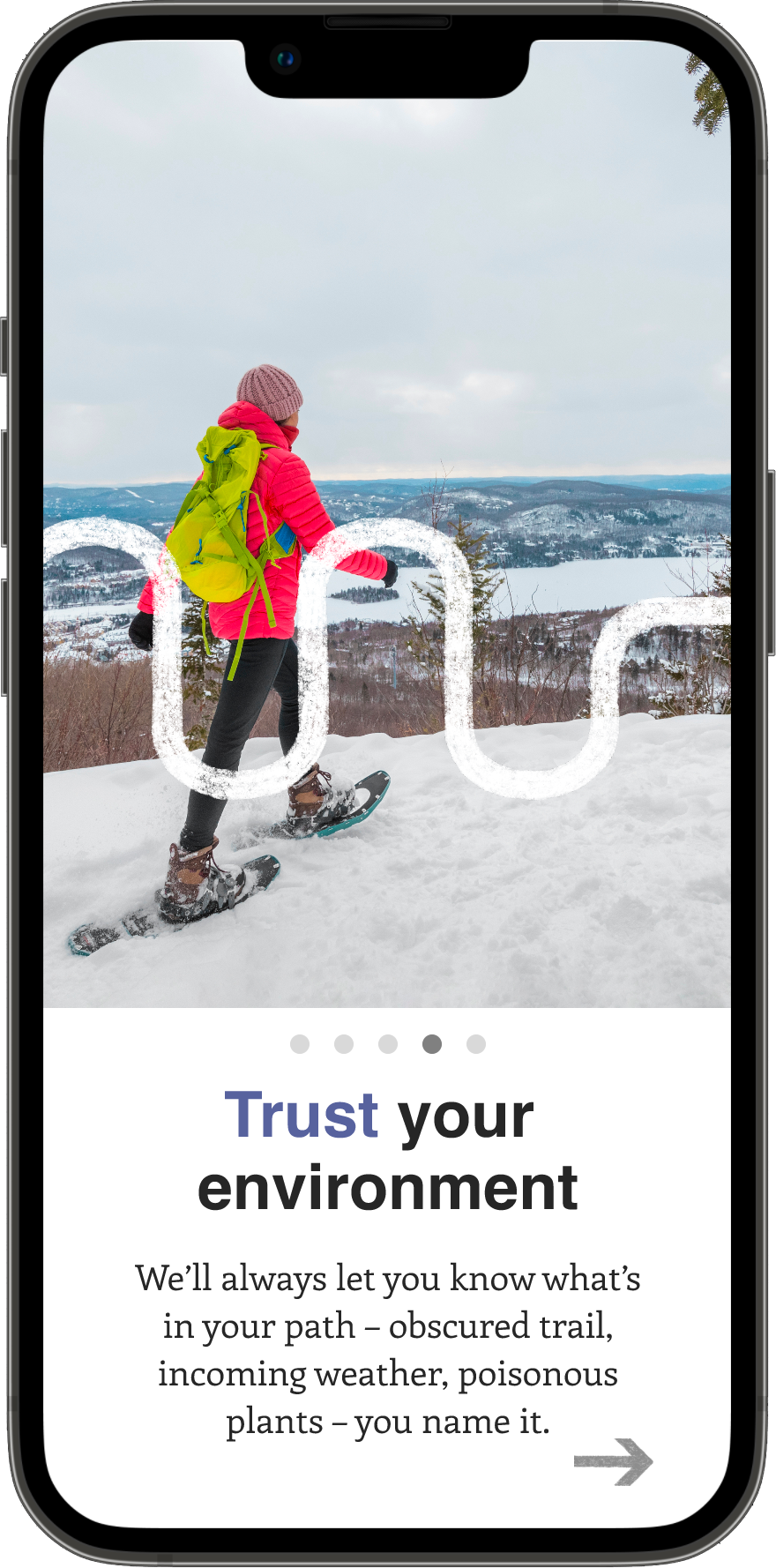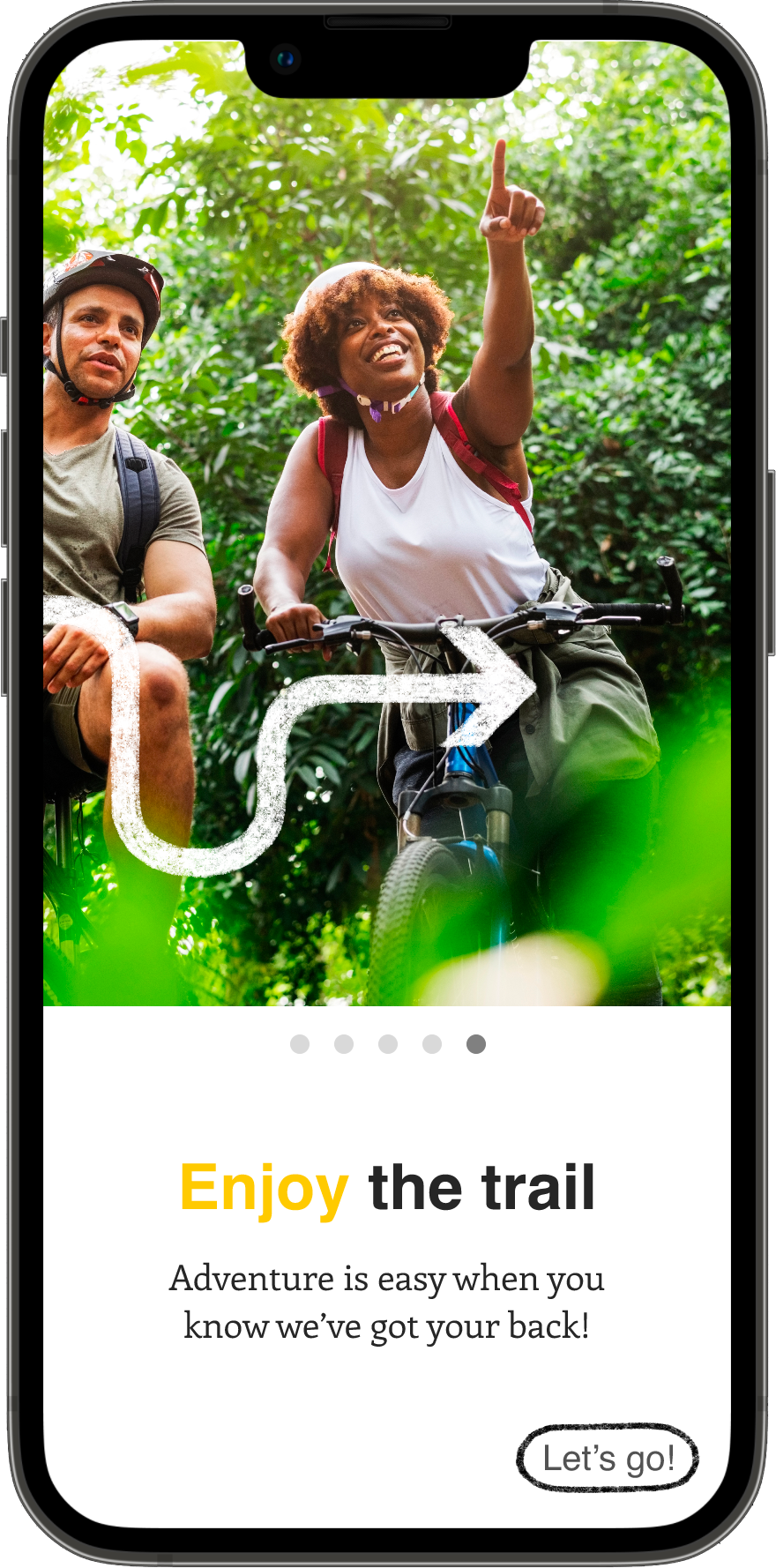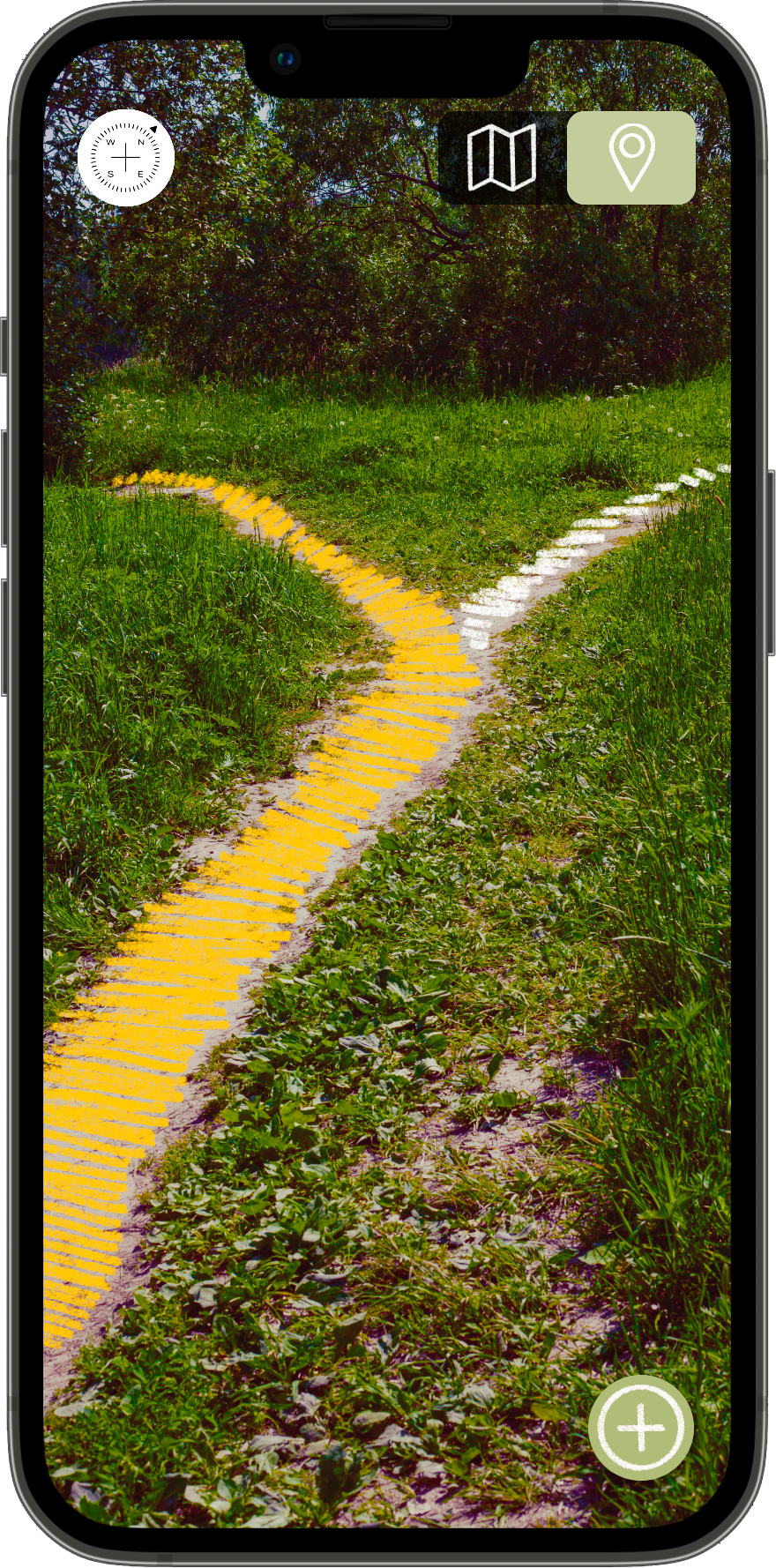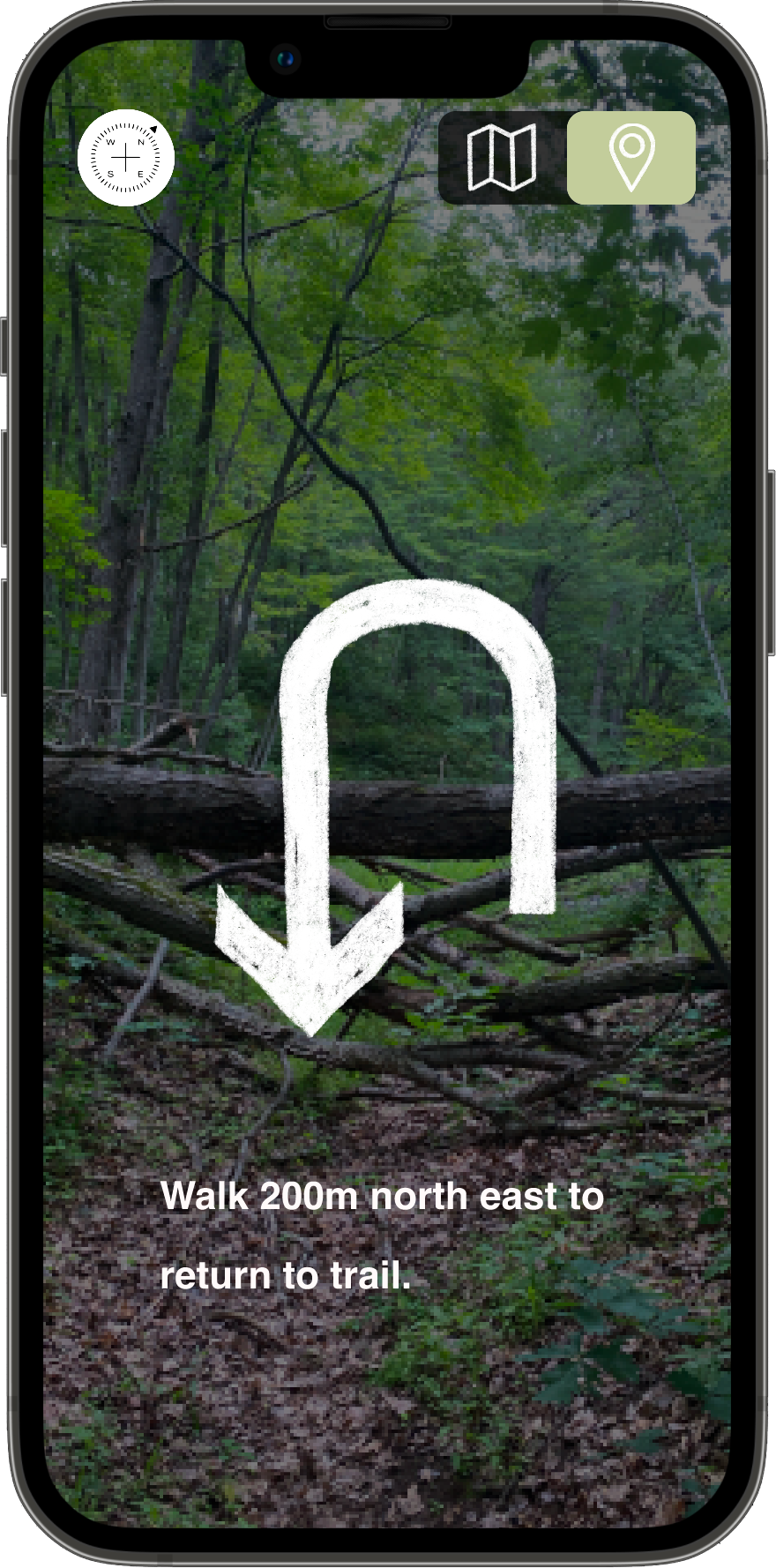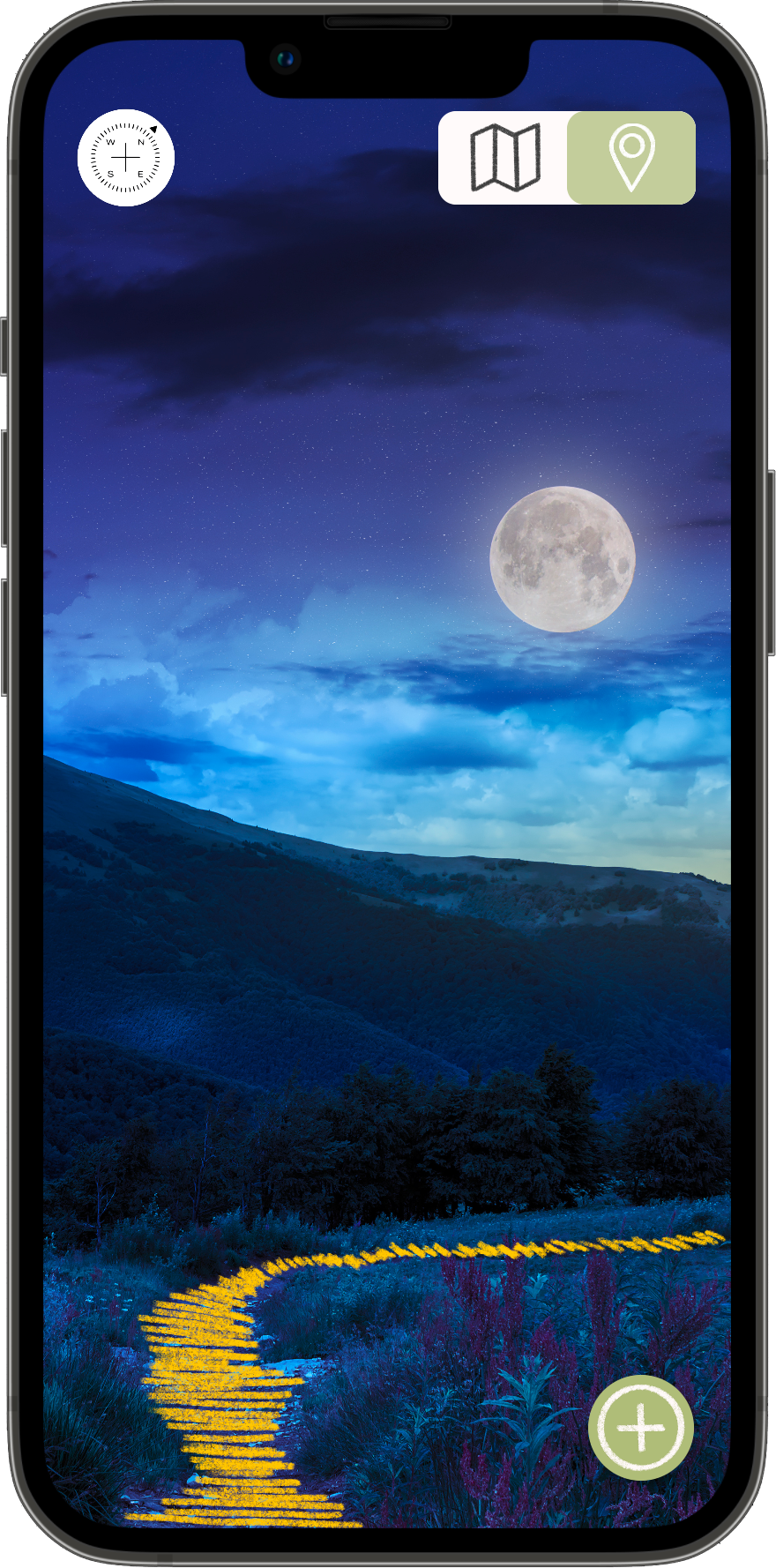A need for greater preparedness and confidence on the trail:
In our Experimental Interaction class this past Spring, we were tasked to come up with a ‘future interaction’ to solve an existing problem. The future part meant that the interactive solution we came up with didn’t technically have to ‘work’ or be 100% technologically possible. It was about imagining what could be possible.
I was thinking about what I wanted to do for this project when my dad and I took a weekend trip to Grand Marais, MN at the end of March. On one of our days, we went for a hike on the shores of Lake Superior. It had just snowed, and much of the ground was covered. Most of the trail had been made clear by other hiker’s footprints, but in a few instances, it took us several minutes to piece together where the continuation of the trail was. We were never truly worried, as we had the Lake as a reference point, and could always retrace our tracks, but it could have been more difficult in a different scenario, and this led to an idea - what if difficulty seeing a trail in ‘real life’ could be avoided? Could a digital trail, integrated with and overlaid on one’s real environment, using augmented reality, allow the trail to be ‘seen’ at any time and in any condition?
This was my personal motivation and jumping off point, but in order to see if there could be a broader use/need for this idea, I started with some research. One, I wanted to learn about what issues currently existed in the world of public lands and trail maintenance, and 2, if my idea might fit in the range of solutions to said issues.
Through reading a variety of literature, from government bills to news articles, I acquainted myself with a range of current issues existing on trails and in the outdoor industry in the US. There are a lot, and I wish I could solve them all. But, through my research, I came to the conclusion that there might be a place for a trail safety and preparedness app, and that it could specifically help to address two areas:

